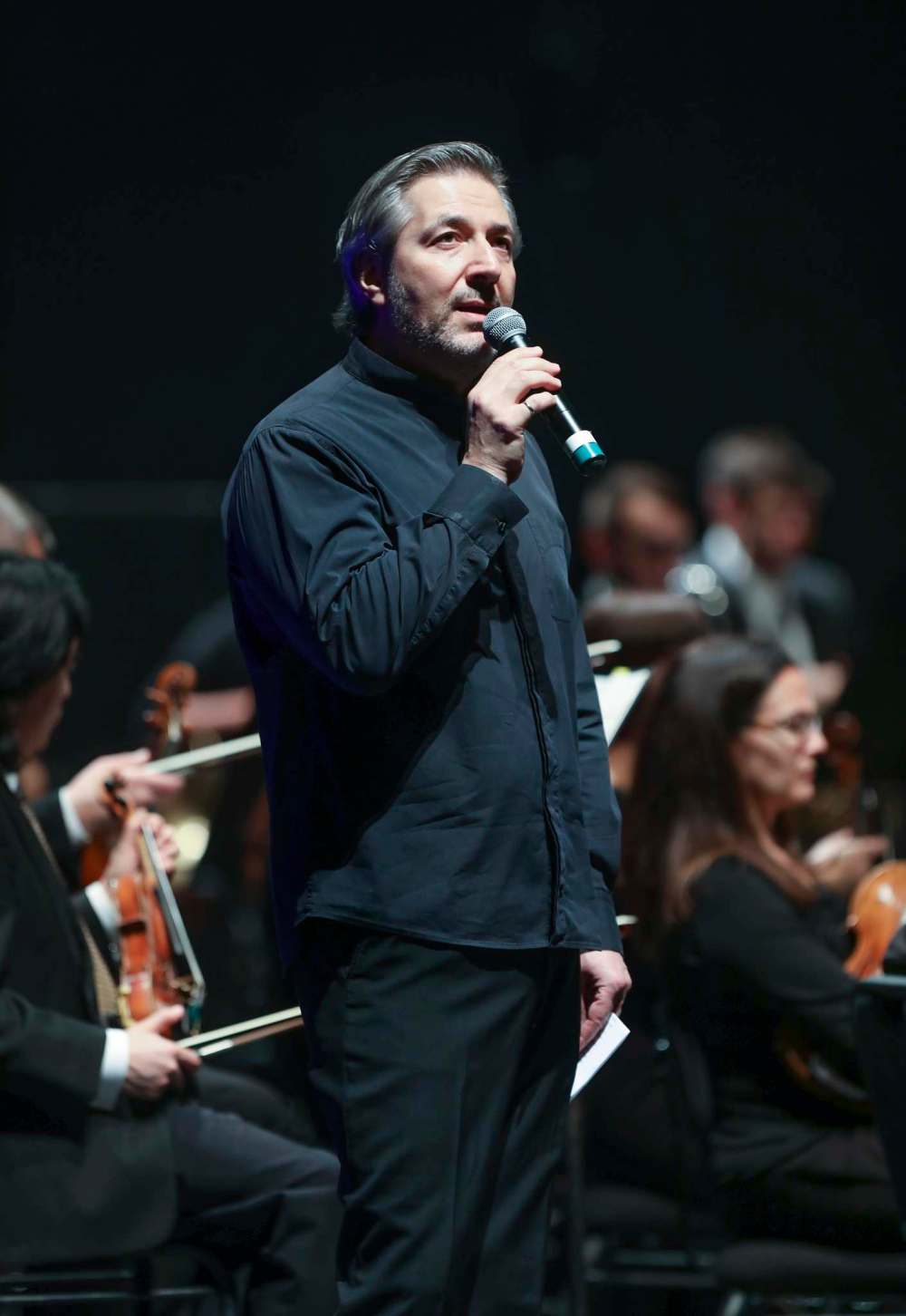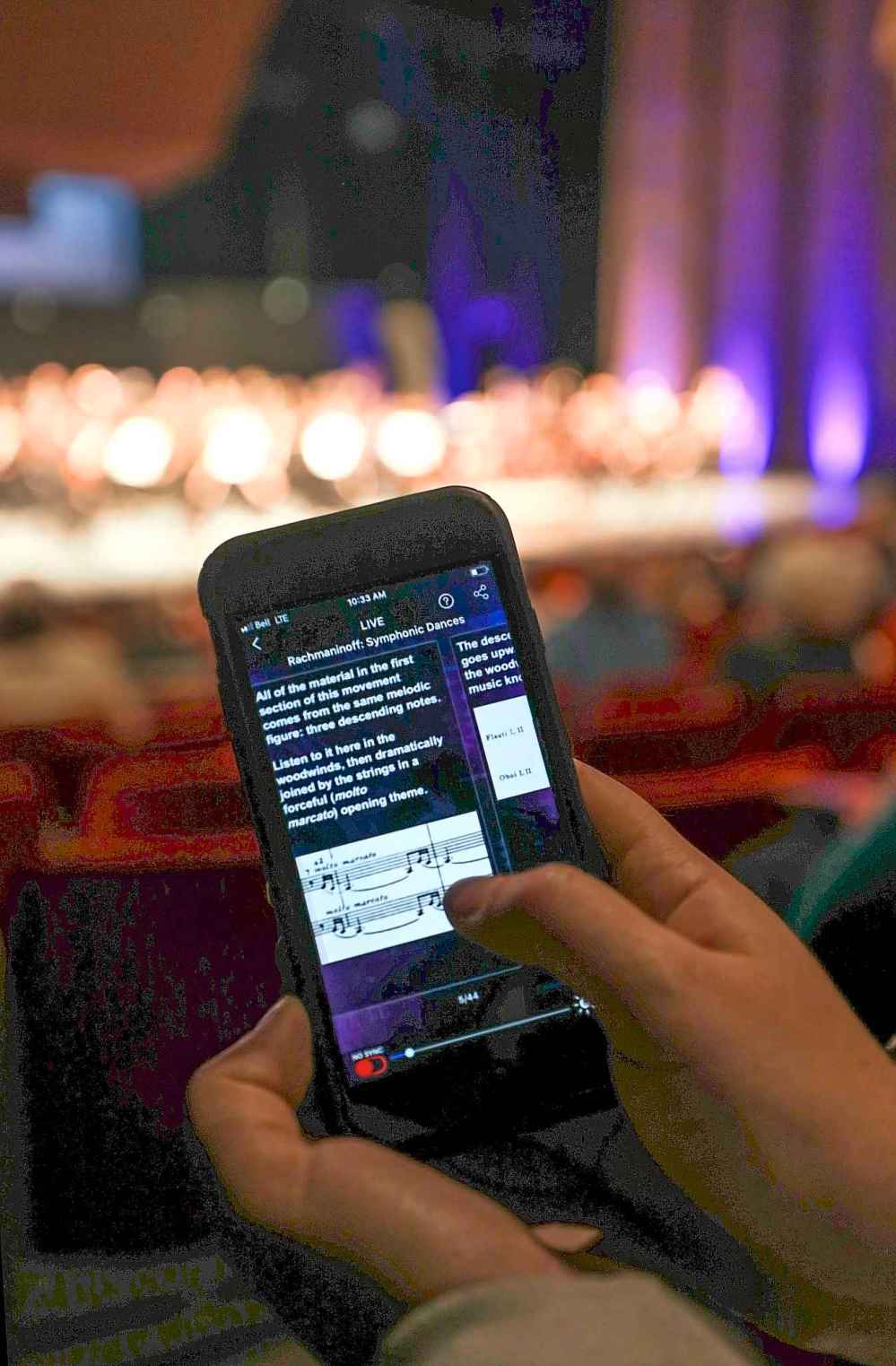Behind the music EnCue app offers entry point for new symphony listeners
Read this article for free:
or
Already have an account? Log in here »
To continue reading, please subscribe:
Monthly Digital Subscription
$0 for the first 4 weeks*
- Enjoy unlimited reading on winnipegfreepress.com
- Read the E-Edition, our digital replica newspaper
- Access News Break, our award-winning app
- Play interactive puzzles
*No charge for 4 weeks then price increases to the regular rate of $19.00 plus GST every four weeks. Offer available to new and qualified returning subscribers only. Cancel any time.
Monthly Digital Subscription
$4.75/week*
- Enjoy unlimited reading on winnipegfreepress.com
- Read the E-Edition, our digital replica newspaper
- Access News Break, our award-winning app
- Play interactive puzzles
*Billed as $19 plus GST every four weeks. Cancel any time.
To continue reading, please subscribe:
Add Free Press access to your Brandon Sun subscription for only an additional
$1 for the first 4 weeks*
*Your next subscription payment will increase by $1.00 and you will be charged $16.99 plus GST for four weeks. After four weeks, your payment will increase to $23.99 plus GST every four weeks.
Read unlimited articles for free today:
or
Already have an account? Log in here »
Hey there, time traveller!
This article was published 25/10/2019 (2237 days ago), so information in it may no longer be current.
The opening matinee for the Winnipeg Symphony Orchestra’s Rachmaninoff Symphonic Dances started with an odd request from conductor Daniel Raiskin last Friday.
“I never thought I would do this in my career, but please turn on your phones,” he said to the crowd at the Centennial Concert Hall.

The Oct. 18 performance marked the symphony’s first foray into audience tech via the EnCue app, a free smartphone application that provides real-time program notes during concerts.
The WSO is the first Canadian symphony to employ EnCue, but major ensembles, such as the Royal Philharmonic Orchestra in London and the Philadelphia Orchestra in the States, have been using similar technology for years.
For Jean-François Phaneuf, the symphony’s vice-president of artistic operations and community engagement, the app is an opportunity to make classical music more accessible. While chatting with patrons at the symphony’s Pops concerts and Night at the Movies events — both of which cater to a more contemporary crowd — he started thinking about the barriers of a traditional concert experience.
“I ask them why they don’t come to our concerts and they say they can’t just sit for 45 minutes and just listen and watch,” Phaneuf said. “With EnCue it’s kind of a companion to listening to the performance.”
During a show, the app provides bits of information as the music is being performed, not unlike a museum audio tour.
Each slide takes a few seconds to read and the screen is darklit to reduce distractions for the people sitting nearby. The Concert Hall lights are also raised slightly to make reading easier. Other symphonies have set up dedicated sections for app users, but Phaneuf said the WSO isn’t going that route at the moment.
“Right now we’re doing it slowly, we’re going to listen to some of our patron’s feedback, we might adjust things, but we feel like it’s really a step in the right direction,” he said. “Changes are always divisive, so some people will not like it.”
“Right now we’re doing it slowly, we’re going to listen to some of our patron’s feedback, we might adjust things, but we feel like it’s really a step in the right direction. Changes are always divisive, so some people will not like it.” – WSO vice-president Jean-François Phaneuf
Using the app is optional and the symphony is only rolling it out for a few pieces in a handful of shows this season.
“If you don’t want EnCue, you can just sit and watch the performance. We’re not putting a screen above the orchestra, which affects everyone,” Phaneuf said.
Creating the content for the app is labour intensive. A team of WSO staff members spent several months making the 44 slides that were used during the Symphonic Dances matinee. They also did some audience testing to make sure the information was free of orchestra jargon.
The slides included details about Sergei Rachmaninoff’s state of mind while writing the three movements (he was depressed); Raiskin’s response to the composition’s saxophone solo (nostalgia for Russia, where he and Rachmaninoff are from); and explainers on different instruments (an English horn is not the same as a French horn).
App users are free to scroll through the slides at their leisure or can sync up the information during the show. On Friday, the symphony’s new assistant conductor, Naomi Woo, was backstage with an iPad and a stand of sheet music controlling the flow of content.

“I definitely have to stay very focused because I’m following along on the score and then changing the slide at particular moments,” she said. “Daniel wished me good luck as he was heading on stage and said, ‘It’s like you’ve got a solo today.’”
Even for Woo, an accomplished music scholar and performer, the app has given her some new insight into Rachmaninoff’s work.
“Just as an exercise it’s been enjoyable for me to think about what people might hear on a first listening of this piece,” she said. “That’s what we want to highlight in this, the moments that your ear is pulled towards something and you say, ‘Oh, I wonder what that is?’ And then the slide just gives you a little clue.”
Classical music can be intimidating for the uninitiated, but the app attempts to even the playing field for everyone in the audience.
“Very rarely do we go to an art gallery after we’ve read a book about art,” Woo said. “I think that this is a way of showing that you don’t have to be an expert… to really enjoy and have very immediate experiences with classical music.”
“How do we make this new and exciting for a new audience without completely stomping all over the traditionalists and the people who like this because it’s their opportunity to dress up and have an elegant evening?” – Principal timpanist Mike Kemp
Vivian Meyer was in the audience last Friday and tried out the EnCue app during the performance. She enjoyed the experience, once she downloaded the app and figured out how to use it properly — Meyer strongly recommends downloading before arriving at the Centennial Concert Hall, a building made almost entirely of reception-hindering concrete.
She is a regular symphony-goer, but wants to learn more about classical music.
“It was reminding me the difference between the viola and the violin…it was including all these little facts that you’re not thinking about,” Meyer said.
When asked what she thought of audience members using their phones during a performance, she said, “If it’s going to enhance the concert I’m cool with it.
“You’re not cool with someone texting or talking on the phone or having their phone beeping and making noises; as long as you have your phone on silent, you’re good.”
The app is more than a digital experiment, it’s a sign of the times for legacy arts organizations, like the WSO, as they try to attract younger patrons.
Mike Kemp is the symphony’s principal timpanist and a self-professed “orchestra brat.” He grew up surrounded by professional musicians, his mother is the assistant principal cellist with the Rochester Philharmonic Orchestra, and he spent much of his childhood hanging out in concert halls.
He recognizes that it can be hard for an organization with so much history to rebrand itself.
“The symphony is like a giant cruise ship — you can’t just turn it on a dime and all of a sudden everything’s going to be fixed. There’s all these generational issues,” Kemp says. “How do we make this new and exciting for a new audience without completely stomping all over the traditionalists and the people who like this because it’s their opportunity to dress up and have an elegant evening?”

Kemp is also a ‘90s kid and regularly tuned into VH1’s Pop Up Video program, which ran behind-the-scenes factoids over music videos.
“I always learned these random facts about pop artists or the process of making a music video. It always stuck with me, maybe more than the song itself.”
He sees the EnCue app serving a similar function for younger folks who may not be as connected to classical music.
“There’s no reason why what we play at the concert hall shouldn’t be as accessible,” Kemp said. “All the music is based on human elements, love, passion, suffering, all of the emotions that we feel.”
eva.wasney@freepress.mb.ca
Twitter: @evawasney

Our newsroom depends on a growing audience of readers to power our journalism. If you are not a paid reader, please consider becoming a subscriber.
Our newsroom depends on its audience of readers to power our journalism. Thank you for your support.











